On Tuesday Feb. 20, members of the Students of Color Alliance put on a Black History Month panel, welcoming all students and faculty of McCallum to learn about their personal experiences with being Black at a predominately white school.
Seniors Gigi Kahlor, Sebastian Banks, Braylen Belvin, Terron Hall and Jude Masoni; juniors Robin Kulhanek, Brianna Miller and Trinity Richardson; and freshmen AJ Brown and Paityn Jones spoke at three sessions during fifth, sixth and eighth periods.
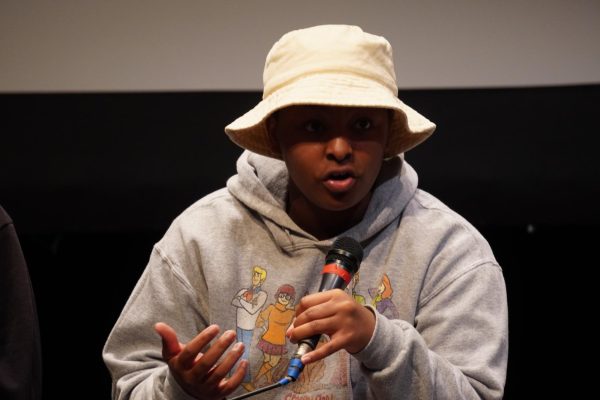
Kahlor, who has been on the BHM panel for two years, felt that this year’s panel was more engaging and entertaining than last year’s panel.
This year there were many more students who were excited to be on the panel and answer questions, encouraging passionate and enthusiastic discussion. The panel discussion was preceded by a poetry reading by Jendayi Innocent and a narrated performance by the Knight Steppers.
“This year, especially compared to last year, was the best year for the student panel,” Kahlor said. “The performances were on point, which was my favorite part.”
For Kahlor, the best panel interview of the day was during eighth period. They felt a stronger connection with the audience and were able to answer more questions. Each session had a new round of questions, making them all unique in their own way.
“The questions we did in eighth connected more to the students which made it more interesting,” Kahlor said. “Everyone needs to have a different experience with it or else it will just sound robotic and scripted.”
Going into the panel, Kahlor expected only a few classes to show up, but they were pleased when so many students and faculty showed up and asked questions.
“I didn’t expect it to be filled this year,” Kahlor said. “Last year people interacted but not as much as this year, so I was just blown away.”
Kahlor said it was touching to see the positive and supportive reactions from this large group of students and faculty. To Kahlor, the crowd helps make the panel special and more interesting. Assistant principal Larry Featherstone hosted the panel allowing audience members to add to the discussion by sharing their own experiences.
“I love the crowd and seeing their reactions when I would say something or even seeing my reaction when they say something,” Kahlor said.
Kahlor hopes that discussing Black History inspires the teachers and helps them learn more about the students they teach.
“Teachers don’t always get this personal information from students,” Kahlor said. “But I hope the teachers can mainly get something out of this talk.”
Kahlor is not only a part of the Black History Month Panel, they are also the president of the Mac Student of Color Alliance. According to Kahlor, just within this past year the club has tripled in size. The SOCA has helped initiate many activities to celebrate Black History Month including putting on a hair wrap demonstration, a movie knight to watch Sister, Sister as well as getting students to hear from guest speakers.
“This year being president, I have been very very vocal about the club saying ‘Oh my gosh everyone needs to join,’” Kahlor said. “I made sure people knew that this club was fun which brought in more people.”
Another member of the SOCA is junior and vice president Brianna Miller. This year was Miller’s first year speaking on the panel. Miller was excited to be able to share her own personal experiences about being Black and help teach the McCallum community.
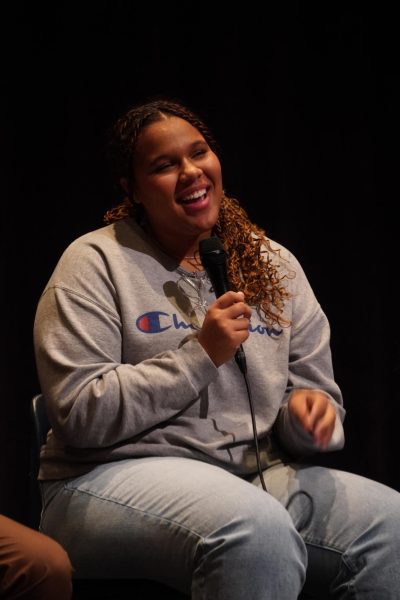
“I think the assembly went well,” Miller said. “I think it was a good opportunity to share our experience and thoughts on Black history.”
For Miller, this experience was very special because she was able to feel heard and felt safe with the SOCA members she has built a bond with.
“For me it was that we all had similar experiences so it really felt like a safe space whenever we shared,” Miller said. “Being on the stage was kind of hard but when you’re on there with people you feel secure with it wasn’t that bad.”
When faculty sponsor Tonya Moore asked the club who was interested, Miller knew she wanted to be a part of teaching her fellow students about black history.
“I’m vice president of SOCA so Ms. Moore mostly asked people that were in the club, so that’s how I was able to be on the panel,” Miller said.
Miller was most surprised by the audience interaction with the panel, especially their questions. Before the panel, Moore created a group of questions for the students to answer. She also allowed the panel to create their own questions if they wished.
“I was most surprised by some of the questions in the audience,” Miller said. “But I liked them because it was like a refresher.”
For Miller, being able to advocate and speak up about her own experiences was most important.
“It’s important to me because I feel like Black history is not talked about enough,” Miller said. “Being able to honor and recognize these moments are important to me.”
The panel this year also gained some new freshmen including Paityn Jones. Jones felt this panel gave her the chance to connect with other Black students as well as the audience. Being in a primarily white school Jones sometimes feels out of place especially in her advanced classes.
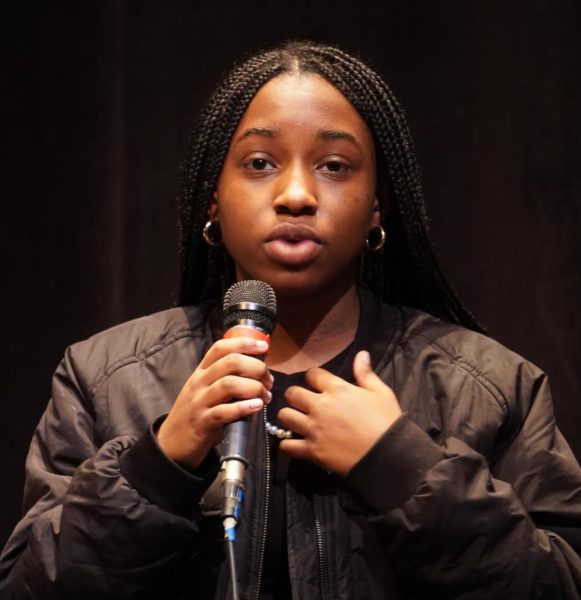
“Having another Black person in my classes helps me feel comforted,” Jones said.
Paityn loved getting the chance to tell her own experiences to the students and faculty of McCallum.
“It’s really good to be able to share my truth and hear other students’ truths,” Jones said.
Jones was excited to begin this panel as a freshman because she can share her updated perspective throughout her four years.
“I like that I’m doing this as a freshman because I have all four years to do this,” Jones said. “I’ll be able to watch the community progress from what I’ve shared.”
Story by Chloe Seckar-Martinez.
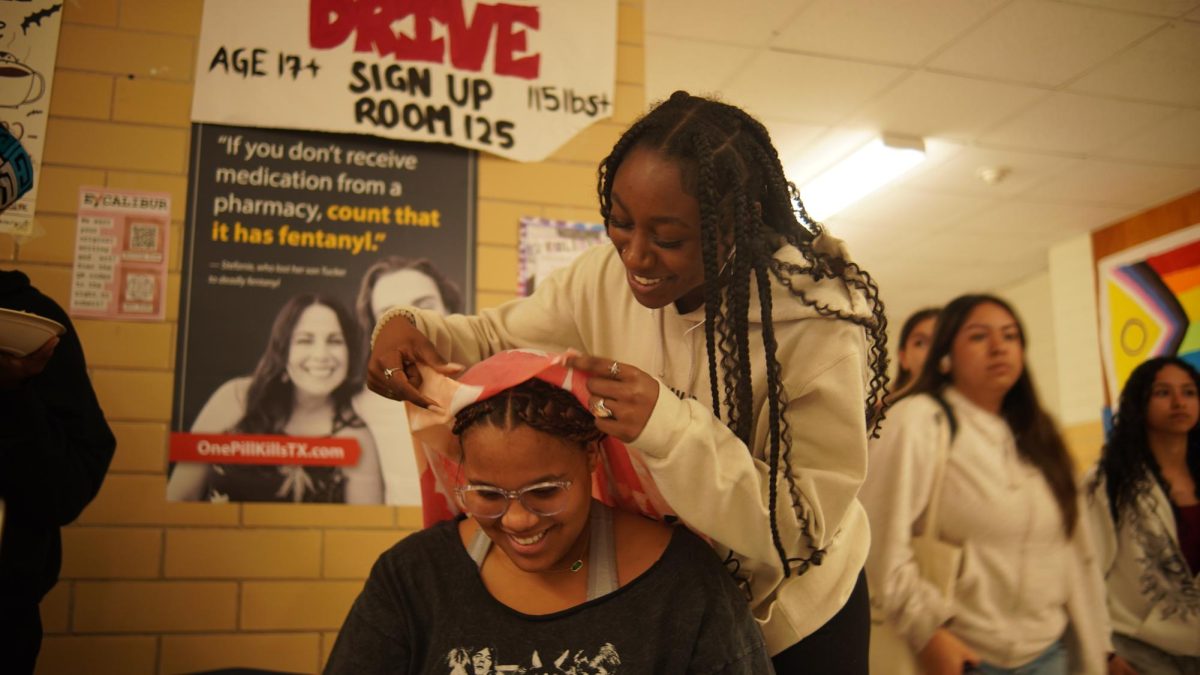
RIDE OR DIE: Juniors Brianna Miller and Trinity Ritcherson participate in the Feb. 13 head wrap demonstration in the main hallway. Miller and Ritcherson are longtime friends who both have acted as advocates for Black voices at McCallum. Like Miller, Ritcherson also spoke on the student panel about the importance of finding community but also of her unique experiences as a person of both African American and Mexican heritage. Ritcherson said of the head wrapping, “It felt amazing to demonstrate something that is regular to me and a part of my culture. I know it was different for a lot of people to see, but it was nice being the representation that Mac needs for Black history.” Ritcherson also emphasized the importance of head wrapping in particular: “Brianna and I thought it would be a good idea to do a head wrap demo instead of hair braiding like last year because we knew it was unfamiliar and underrepresented so we thought it would be a cool switch.” Caption and photo by Beatrix Lozach.
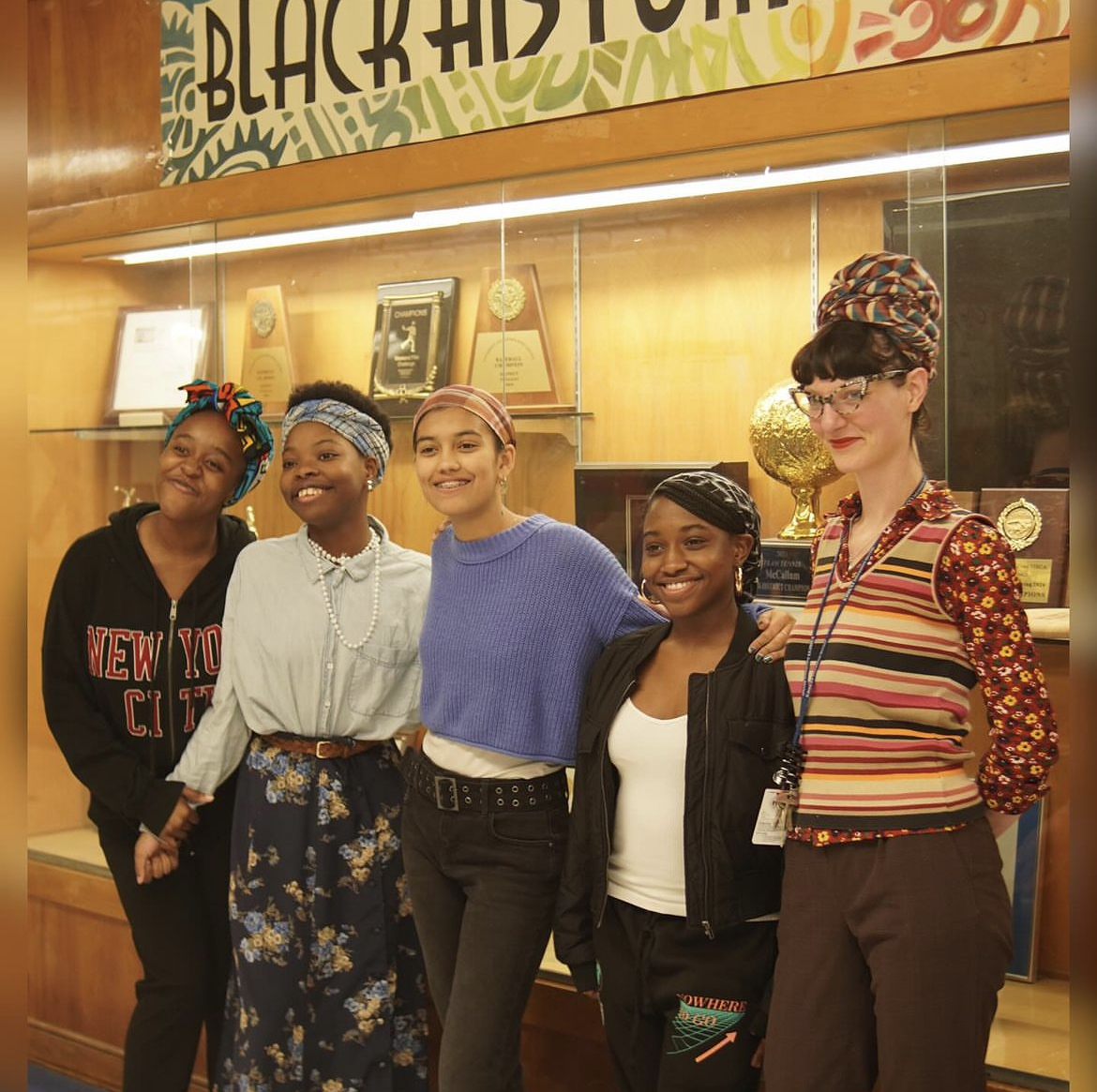
HALOES AND HISTORY: During the Black History Month hair-wrap demonstration on Feb. 13 organized by the Students of Color Club and its sponsor, Fine Arts Academy assistant Tonya Moore, freshmen Paityn Jones and Tegan Hahn, sophomores Noble Pierce and Cozbi Sims, juniors Brianna Miller, Trinity Ritcherson and Jendayi Innocent, librarian Jain Orr, ISS monitor Deborah Gardner, teacher assistants Paula Hockaday and Roberta Reed and several other willing volunteers got their hair (or heads) wrapped in a loving continuation of longstanding African-American and Afro-diasporic tradition.
Moore explained why the head wrap demonstration was an important part of the school’s observance of Black History Month.
“Black hair is our crown, and I want people to listen when you’re able to express what’s special about your culture,” Moore said. “Back during slavery, Sundays were the only day where they could wear head wraps, so that’s why they’re so colorful and vibrant. I remember my mom and my grandma wearing them, and I passed the tradition down to my daughters.
I want students to learn more about Black culture. To embrace it. I feel like when people don’t understand, they shy away from it. I have a student from Dubai, and she would always tell me about the beautiful head-wraps her mother made, but she was scared to wear them here! She came to McCallum as a sophomore, and now, two years later, as a senior, she’s finally wearing them. The more we educate people, the more we feel comfortable. Any time we get an opportunity to share, it helps. I’ve worked at places where we didn’t do anything for Black History Month, and I feel that it’s important to have administrative support, like what we have from Mr. Baxa. Cultural literacy is so valuable. When people are exposed to new environments, they feel more comfortable, because that’s how the world really is.”
Caption and photo by Beatrix Lozach.
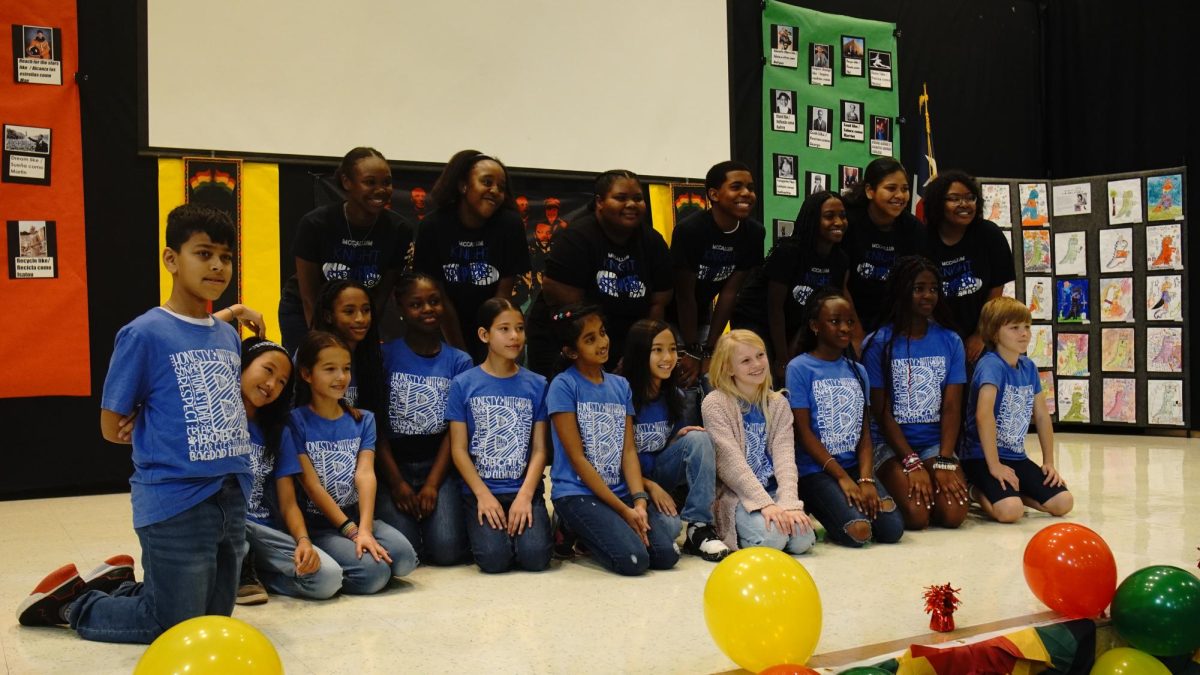
STEPPING IT UP: The Knight Steppers took their show on the road Friday morning performing live at Baghdad Elementary in Leander. The opportunity came through the encouragement of McCallum teacher Deborah Gardner who encouraged principal Monica De la Garza-Conness to invite the Steppers to perform as part of the school’s Black History Month assembly.
Since their debut performance at the pep rally on Nov. 3, the Steppers have grown a great deal according to two members of the team: AJ Brown and Paityn Jones.
“We’ve gotten closer,” Jones said. “It’s easier to come up with new step routines.”
Brown agreed with that take.
“Our team has evolved so much since October,” he said. “You can see the difference from then and now. It’s easier to come up with steps and stay in sync.”
He said that it takes less than half as much rehearsal time for the team to master a new routine. What used to take a month, now takes a week or two.
More importantly both steppers say their involvement in the team has meant a great deal to them.
“This team has given me a lot of discipline, and I have learned to commit to something,” Brown said. “I’ve also learned how to work with different people in a different group. It’s really amazing.”
Jones said her involvement has made her a part of something bigger than herself.
“It’s given me a family at school, and a community I can turn to if I need anything,” she said.
Caption and photo by Shayla Allen.
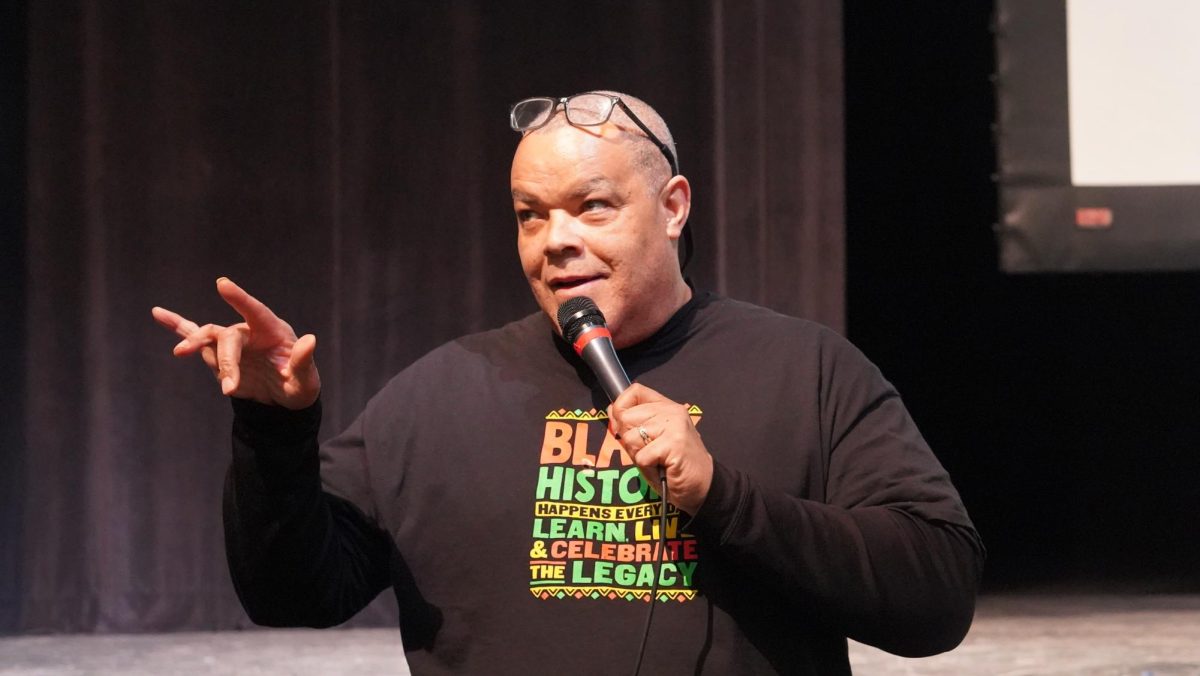
Students serving on the Black History Month panel took to the MAC stage on Tuesday Feb. 20 during fifth, sixth and eighth periods to conduct a question-and-answer session with students and faculty members.
Assistant principal Larry Featherstone, who hosted the three sessions in the MAC, explained why he and Students of Color Alliance decided to have a student panel as a regular part of Black History Month activities at Mac.
“It’s always important, when you have a school of almost 2,000 students, to hear their perspectives. So that was our thinking,” Featherstone said. “Ms. [Tonya] Moore and I thought it was important to hear from a student perspective. We wanted you to be able to dialogue with the students and have an interactive conversation.”
Reporting by Beatrix Lozach. Photo by Emerson Merritt.
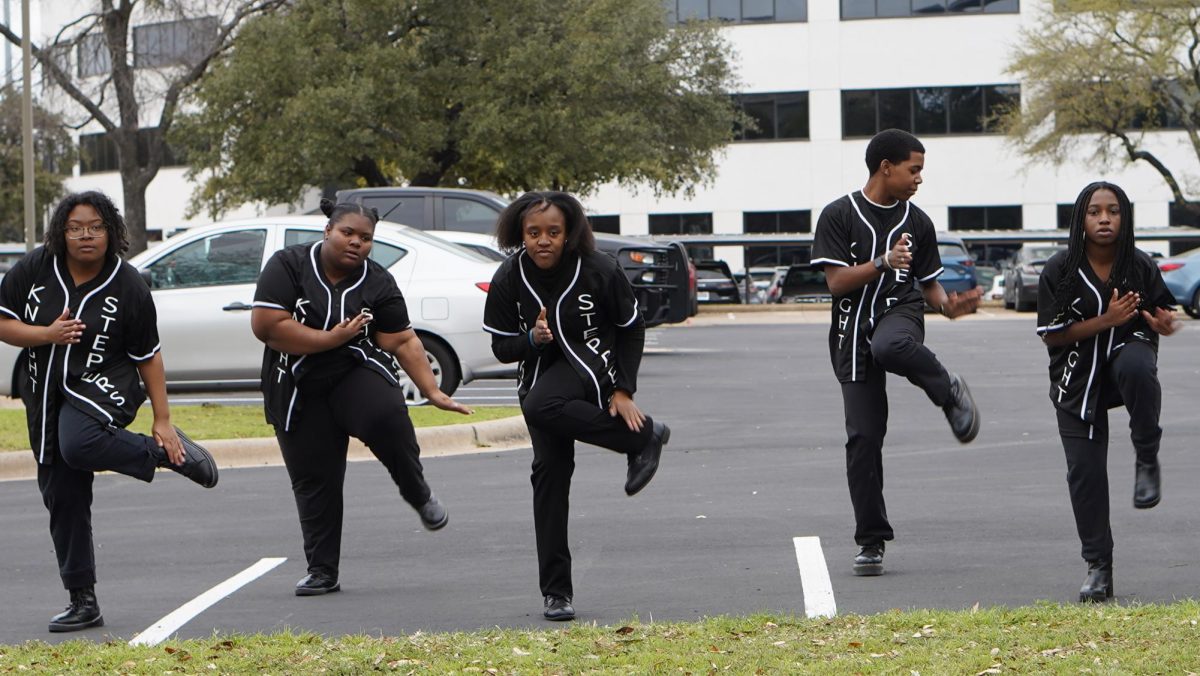
STEPPERS IS FOR EVERYONE: On Feb. 29, the Knight Steppers traveled to the AISD Central Office to perform for faculty members among various other black history events held at the Central Office to celebrate the end of Black History Month.
Senior Knight Stepper Jendayi Innocent said their performance gained positive reception.
“We got lots of applause,” Innocent said. “After it was over we got like two invites to other schools.”
Innocent explained the importance of Black History Month as an showcase opportunity for the Steppers.
“It was kind of a spark to let everyone know that we’re here,” Innocent said.
Moving forward, the Knight Steppers are looking to recruit more members starting in April and expand their demographics.
“Everyone can join,” Innocent said. “Some people have never taken dance before but they’re still able to step with us which is really cool. It’s for everybody.”
Caption by Josie Mullan. Photo by Aisha A.
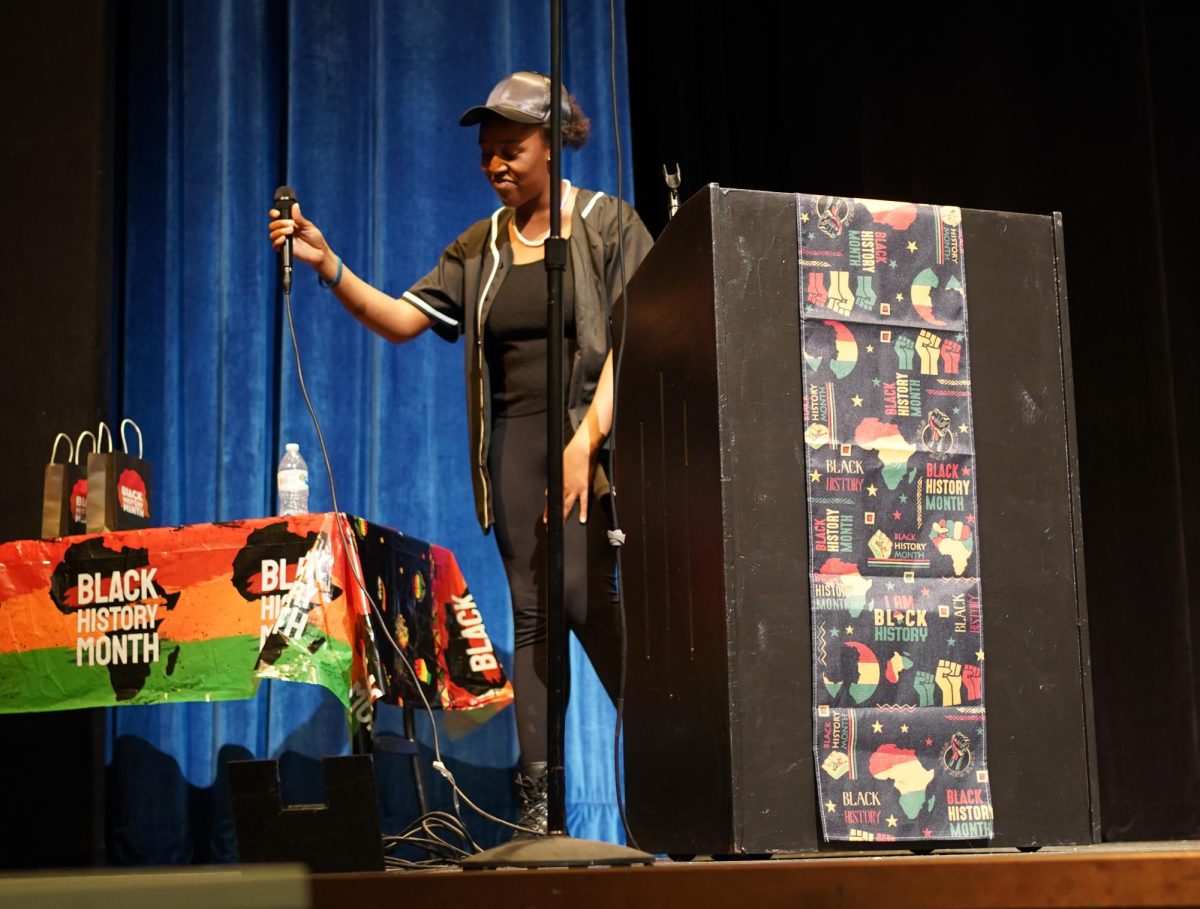
SPEAKING FROM THE HEART: During the Students of Color Alliance student panel on Feb. 20, senior Jendayi Innocent recited a poem called “Hear Me” about the hardships African Americans face daily.
Though Innocent recited the poem, it was written by a fellow Knight Stepper who wished to remain anonymous. She agreed to recite the poem because she loved the name of it.
“My favorite part of the poem was the title and the ending was my favorite part because I got to remind the audience to listen to our struggles and no longer ignore us for the years to come.”
Another aspect of the poem she appreciated was that the students got to learn what struggles African Americans face.
“The message behind it tells a little story about what Black people are going through daily,” Innocent said, “It’s just telling people to think about what [someone] else is thinking about.”
Innocent also shares that she was not nervous about reciting the poem to a large group of people as she considers herself a public speaker.
“I have always loved to speak in front of an audience, and I feel like I was born to do it,” she said.
Caption by Gaby Esquivel. Photo by Chloe Seckar-Martinez.
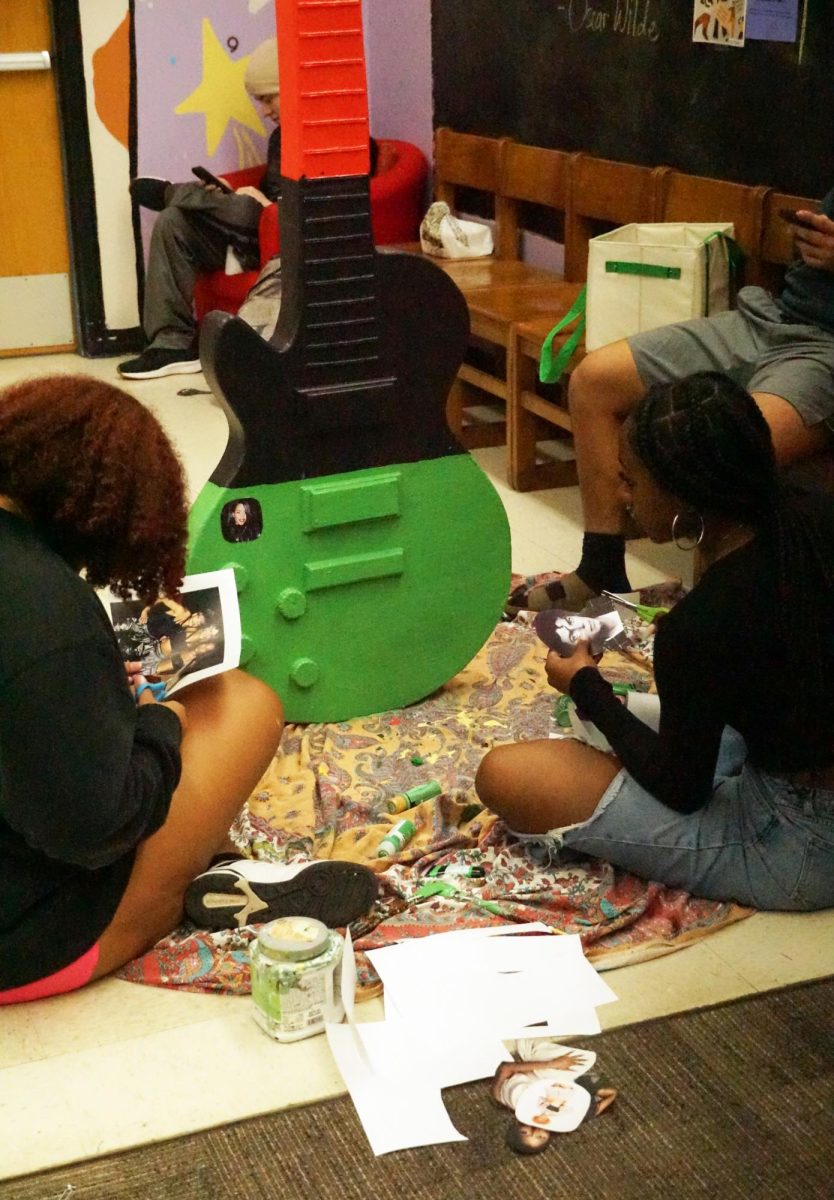
BLACK MUSICAL LEGACIES: On Feb. 2, the second day of Black History Month, Brianna Miller and Trinity Ritcherson work together to decorate former AV teacher Ken Rogers’ old decorative guitar and adorn it with Black musical artists.
“Ms. Moore asked us to paint the guitar, because they did it for Pink Week,” Miller said. “We thought we could [also] do it for Black History Month.”
In order to decorate the guitar, Miller and Ritcherson used paint and printed out the photos of the artists on cardstock paper. The paint colors correspond to the colors of the African-American flag.
“Since it was a guitar,” Ritcherson said. “we associated it with music.”
The duo chose famous Black artists from the 1950s, ‘60s, ‘70s, ‘80s, ‘90s and into the 21st century. Sza and Michael Jackson were among the artists applied to the guitar and then glued to its surface and varnished. Miller, the vice president of the Students of Color Alliance, said that the musicians featured on the guitar are just a sample of the rich history of Black musicians through history.
“I feel like it’s a small representation of Black music over the decades,” she said.
Caption and photo by Delaney Lavelle.
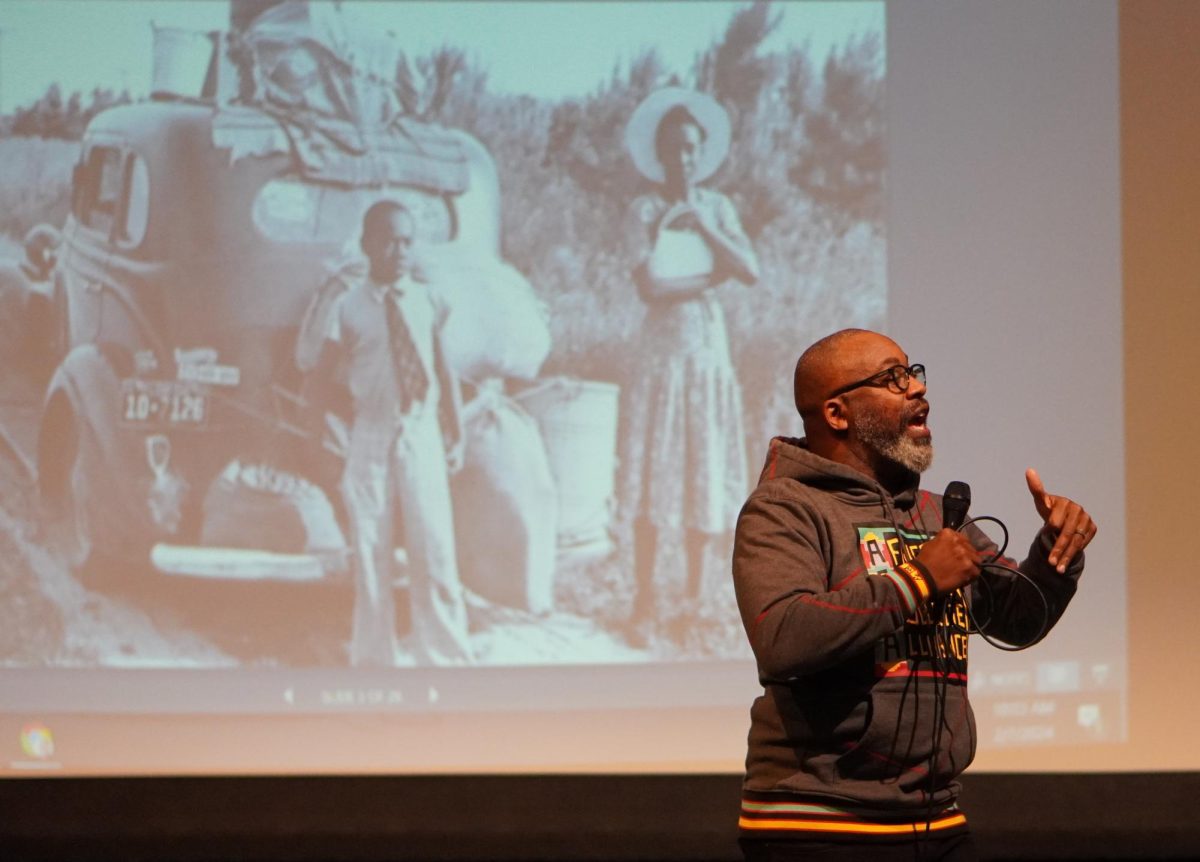
A LECTURE FROM DR. MOORE: McCallum kicked off its observation of Black History Month on Wednesday Feb. 7 with an annual BHM staple at the school, a lecture from UT history professor Dr. Leonard Moore. During his presentation, Moore illustrated the economic legacy of Jim Crow segregation across generations in America through an analogy of the popular board game, Monopoly.
What if life was a game of Monopoly? Moore asked the students seated in the MAC. What if Moore was playing with his friends but, unlike his friends, he was not allowed to buy property for 20 turns around the board? Well, he explained, after 20 turns almost all the property on the board, the prime property most assuredly, would have been purchased before he had a chance to buy any of it, leaving him economically far behind his peers in the game.
And what if Moore and his friends took a break from the game and let their kids play in their absence? Inheriting his father’s lack of properties on the board, Moore’s daughter would have far fewer resources than the other players at the table even though theoretically she had the right to buy property at every turn.
This metaphorical game, Moore said, was and still is the economic reality of post-Jim Crow America.
During that same first-period lecture, freshman Jude Singh had the opportunity to walk up on the MAC stage and talk to Moore about redlining, another way that discrimination creates economic inequity. According to the Fair Housing Act, which is in title VIII of the Civil Rights Act of 1968, redlining is the practice of denying a creditworthy applicant a loan for housing in a certain neighborhood even though the applicant is economically eligible for the loan.
“The term refers to the presumed practice of mortgage lenders of drawing red lines around portions of a map to indicate areas or neighborhoods in which they do not want to make loans,” the act reads. “Redlining on a racial basis has been held by the courts to be an illegal practice.”
Singh was called onto stage after answering Dr. Moore’s question about redlining. Once on stage, Singh discussed racial bias, ethnocentrism and how redlining continues to affect people.
“It’s an economic whirlpool of keeping poor people poor and rich people rich,” Singh said. “Usually, the affected communities are colored communities. Legislature keeps pushing taxes and property values in more valued areas, which means people who can’t afford it move to the areas people forget about. And then crime will flourish, and everything goes down the drain.”
Singh talked with Moore about his own family’s experience with racial injustice.
“My grandfather immigrated from India and transitioning to a life in America was really difficult for him,” Singh said. “Of course, he found a way to make a living, but a lot of the time he would have to sacrifice things he would want for things to survive. I’m very grateful that he provided so well for my family and set me up with a good start.”
Caption by Carlo Hinsdale and Francie Wilhelm. Photo by Maggie Mass.
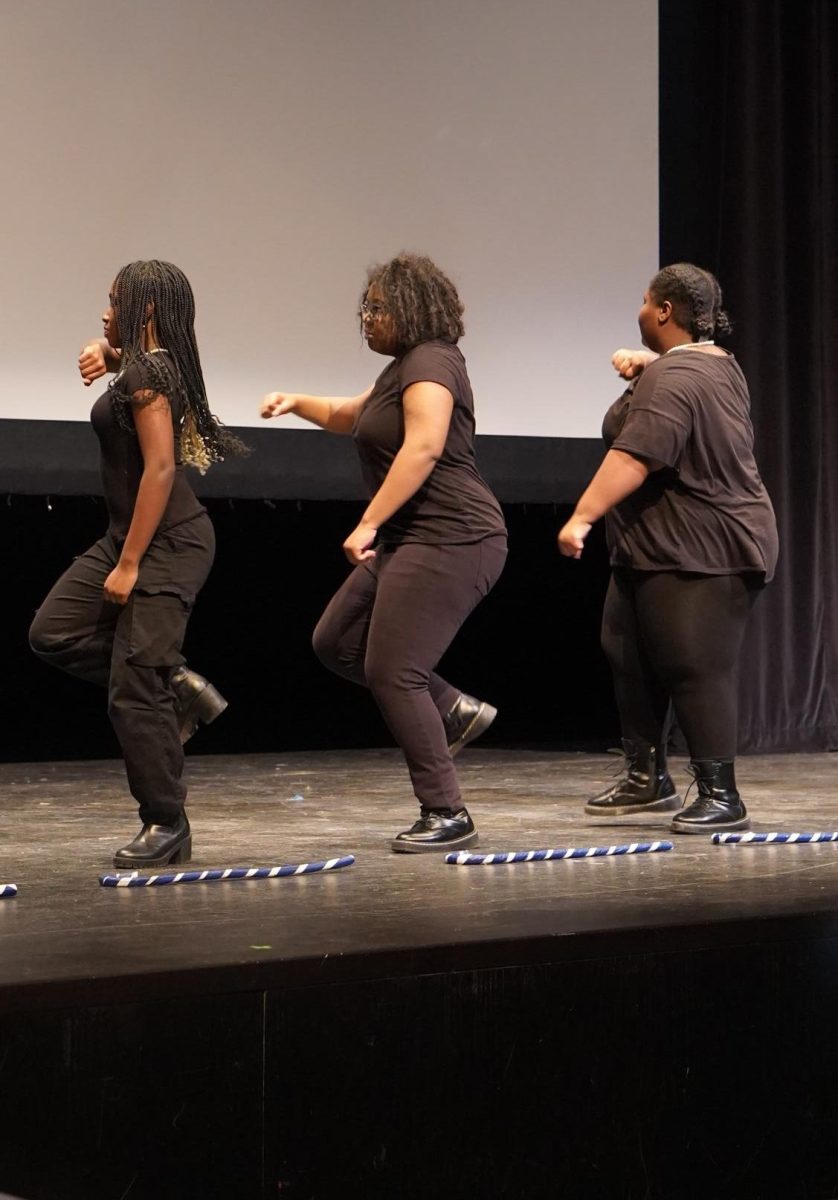
STEPPERS PERFORM FOR MAC: Freshman Paityn Jones, junior Brooklin Fisher and freshman Bailee Fisher of the Knight Steppers perform at the Black History Month assembly on Tuesday during the eighth-period assembly. Brooklin Fisher said she felt that the assembly was the perfect opportunity for the Steppers to showcase their wide-ranging skills.
“I really liked how we incorporated the Black culture and music into the show,” she said. “Even though we are a step club, I really liked how we were able to include step, dance and song into showing something different.”
The club’s first ever performance took place back in November, but since then, Fisher says, they have improved and grown quite a bit.
“I like to think that throughout the whole performance day that we slowly kept on getting better and better,” she said. “Even though when we first started there were well over six of us, we’ve been able to improve throughout the season with the limited time and practices we were given before each given opportunity.”
Caption by Lillian Gray. Photo by Emerson Merritt.
The members of the Black History Month panel—freshmen AJ Brown and Paityn Jones, and seniors Terron Hall, Sebastian Banks and G Kahlor—explain what code switching is to the fifth-period audience in the MAC on Feb. 20. “Around my Black friends or my family, I am definitely able to relate more to them because in a lot of ways we grew up in a similar way or we went through the same things at school or at home,” Banks said. “When I come to school around some of my friends who aren’t Black, it’s different. We talk about different things, or we might joke around differently. Sometimes I notice it, sometimes not.”
MAC Backs Black:
Movie Knight in the Library during lunch! Featuring (sitcom) “Sister Sister” @macstudentmedia pic.twitter.com/6IvdX0HelN— McCallum HS (@McCallumHS) February 15, 2024
A CHILDHOOD MOMENT SPREAD ON: As part of the Students Of Color Alliance Black History Month celebration, the club put on a Movie Knight in the library during lunch to give students the chance to connect with Black history through popular culture.
The lunchtime showing was organized by Tonya Moore, Trinity Ritcherson and Brianna Miller. The trio worked together to provide a friendly and safe environment for viewers, as well as pick a show with African American characters that had been influential in their lives. The group landed on Sister Sister, which focuses on the importance of African American lives.
“This event was important because the episode of Sister Sister delved into the importance of historical Black figures and how they paved the way for others,” Miller said. “I feel that it was a good way to educate people about Black history while also being entertained. My favorite part was honestly just seeing everyone’s reaction to the episode. I grew up watching Sister Sister, but many others didn’t so it was just an exciting experience to share with others.”
Caption by Chloe Lewcock. Embedded Tweet from the X account of McCallum High School
ALL IN THE FAMU-LY: When social studies teacher Stephannie Pinto was in high school, she didn’t know about historically Black colleges and universities and was set to attend University of South Florida, but then her choir teacher opened to door to Florida A&M by helping Pinto secure a scholarship, and Pinto’s life was forever changed. Given the opportunity to decorate a door for Black History Month, Pinto almost immediately decided to use her door decoration as a way to introduce Mac students to the rich history and benefits of attending Florida A&M, known among current and former students as FAMU. “The thing I really love about an HBCU is how community-oriented it is,” Pinto said. “We call our university FAMU, and we love to play on that nickname of FAM. We call ourselves FAMU-ly. We stay connected. Alumni are constantly getting to know each other, getting together, helping each other out. Your professors still care about you after years. In fact, just yesterday as a matter of fact, one of my professors reached out to me just to ask a question about A Different World going on tour. Overall, there’s nothing that you can’t do at an HBCU.”
Teachers, students show off their BHM Door decorations
As part of this years Black History Month celebration, several classroom doors were decorated by faculty, by students or by a combination of both. We are pleased to share our interviews with some of the door decorators here, including the winner of the competition, Ms. Paula Hockaday. Students of Color Alliance adviser had to bring in officials from the district to judge the competition because her door decoration was a strong contender, creating a conflict of interest that made her ineligible to judge the doors herself.
Door No. 1 — Deborah Gardner, My Family is Black History
Reported and produced by Alice Scott and Lanie Sepehri
View this post on Instagram
Door No. 2 — Kelly Wroblewski, Black HER-Story Month
Reported by Lillian Gray and Shila Gill and produced by Alice Scott
View this post on Instagram
Door No. 3 — Paula Hockaday, Amanda Gorman is Standing Out
Reported by Olivia Dungan, Aubrey Macedo and Katie Martin and produced by Alice Scott
View this post on Instagram
Door No. 4 — Telvi Altamirano-Cancino, Honoring the Queen of Salsa
Reported by Elli Grace Hodges and produced by Lanie Sepehri
View this post on Instagram
Door No. 5 — Aria Moreno, Black History is Texas History
Reported by Shila Gill and Josie Mullan and produced by Alice Scott
View this post on Instagram
Door No. 6 — Link Crew: We love Black History Month
Reported and produced by Mira Patel and Ingrid Smith
View this post on Instagram
Door No. 7 — Students of Color Alliance: Black History is American History
Reported by Olivia Dungan, Aubrey Macedo and Katie Martin and produced by Alice Scott
View this post on Instagram
Door No. 8 — Charlotte Favrin’s French students: Hėritage Africain
Reported by Carson Duncan, Josie Fisher and Josie Linton and produced by Sophia Manos



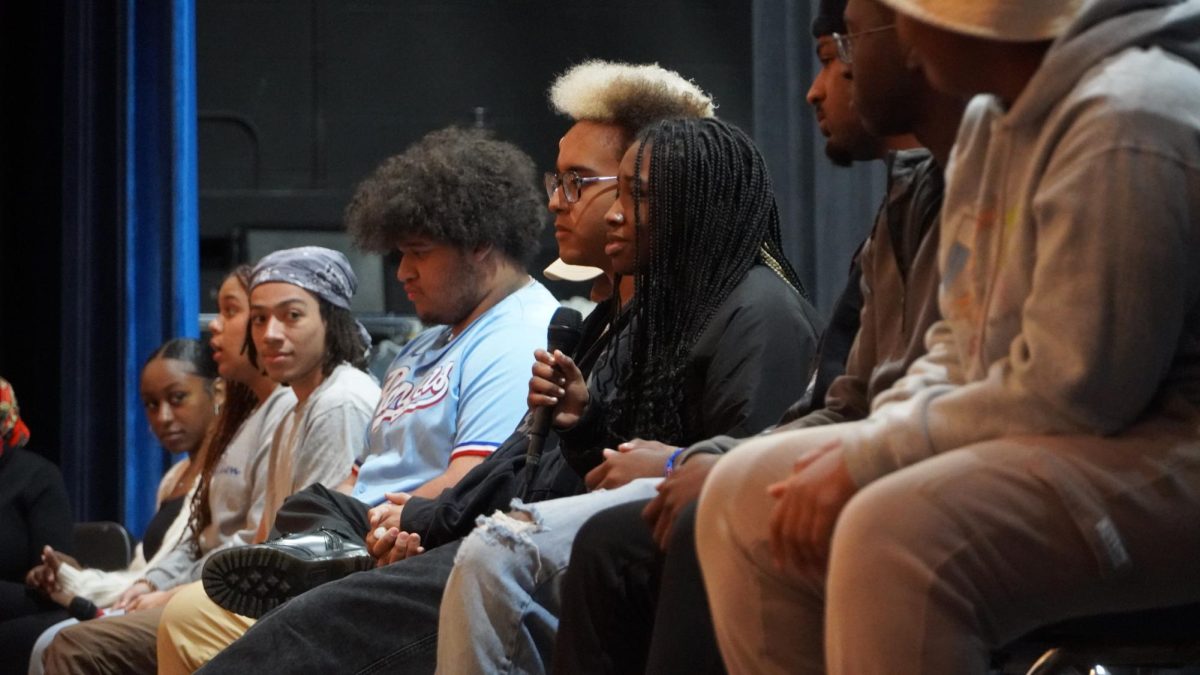
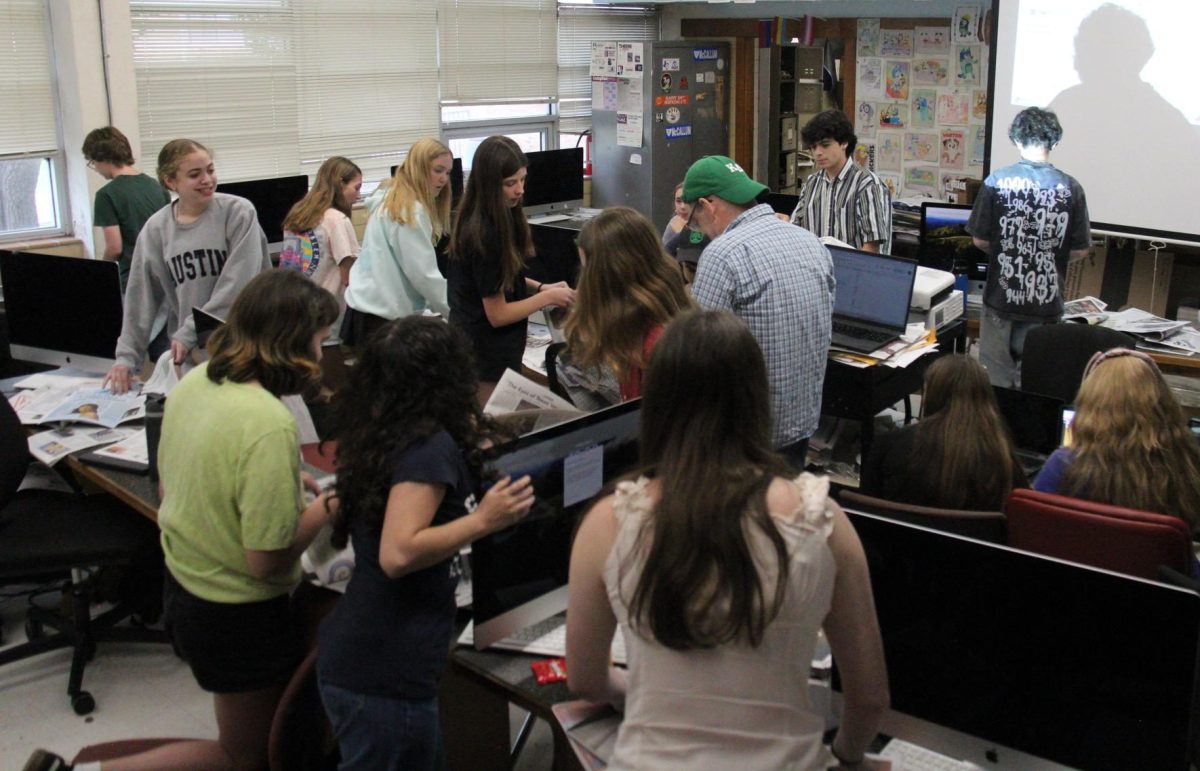

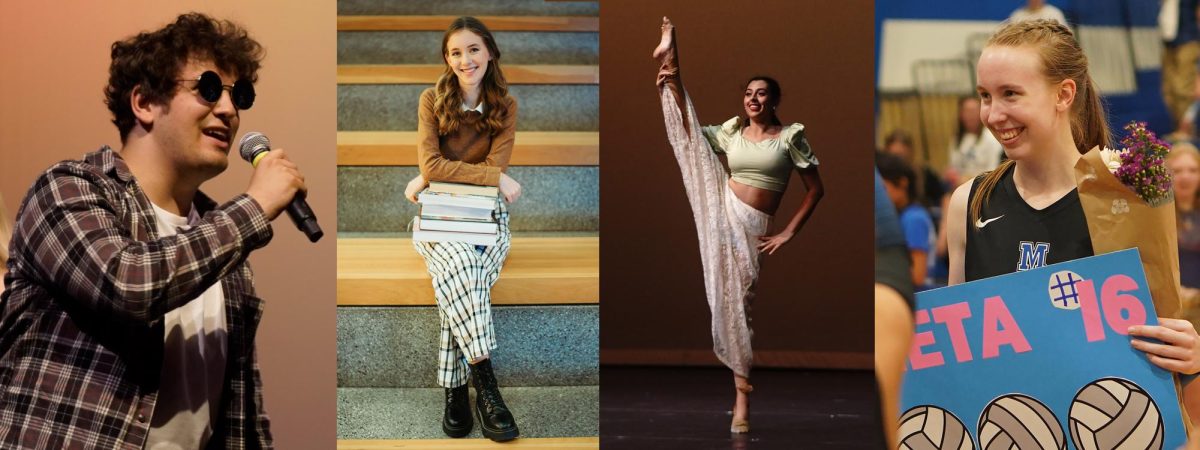
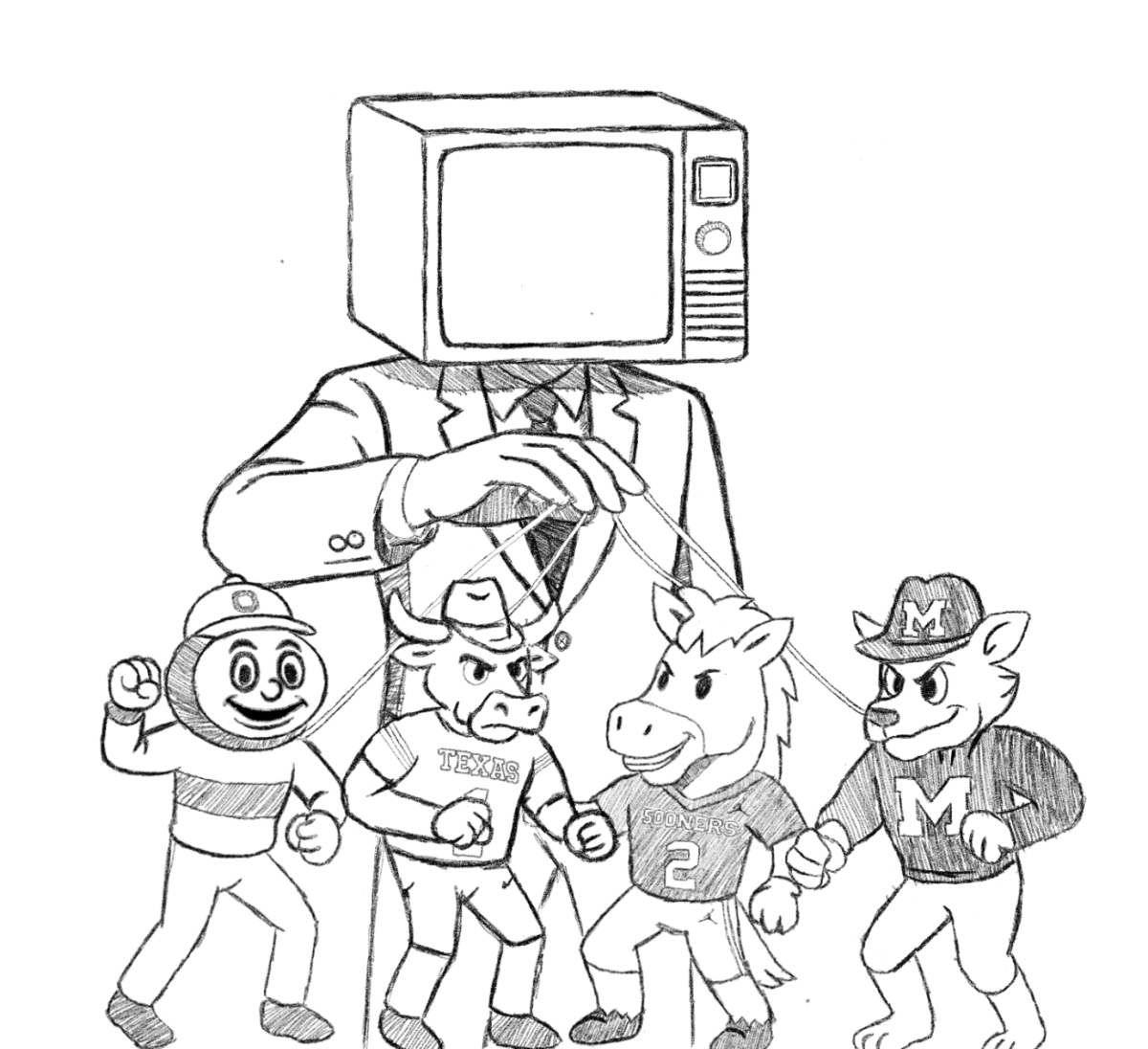
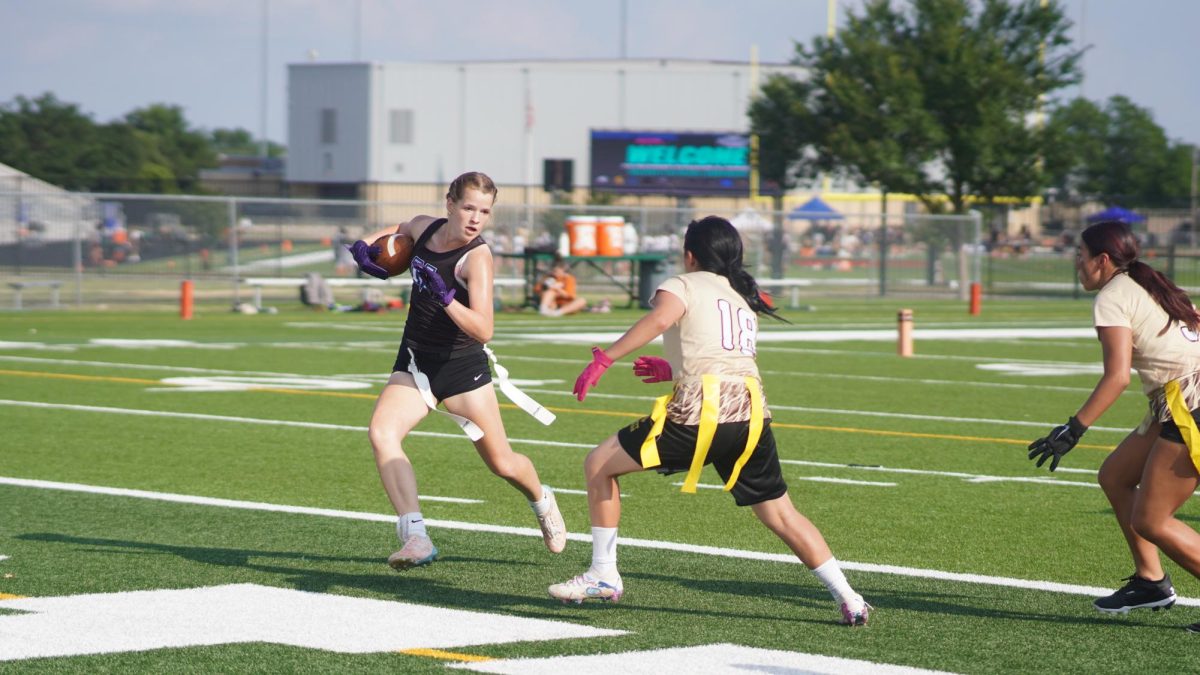
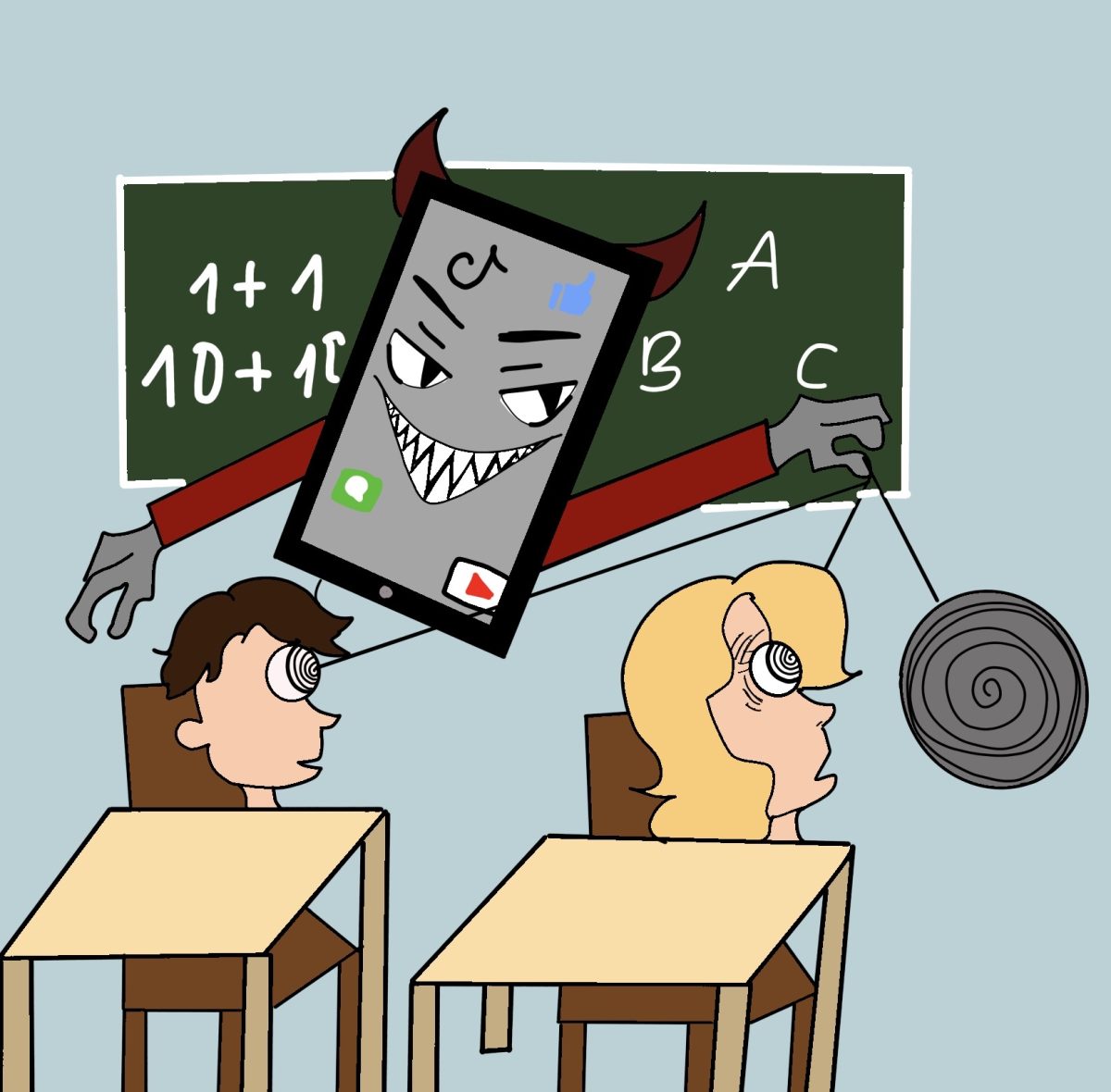

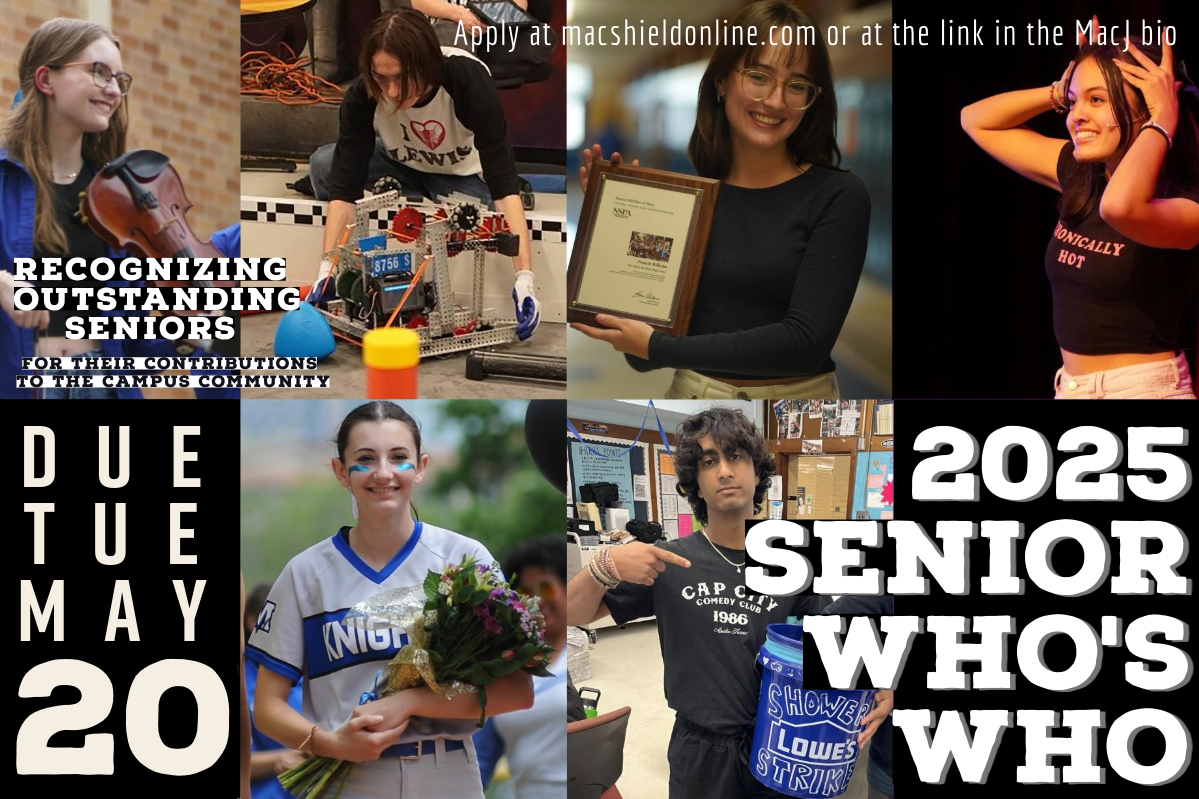

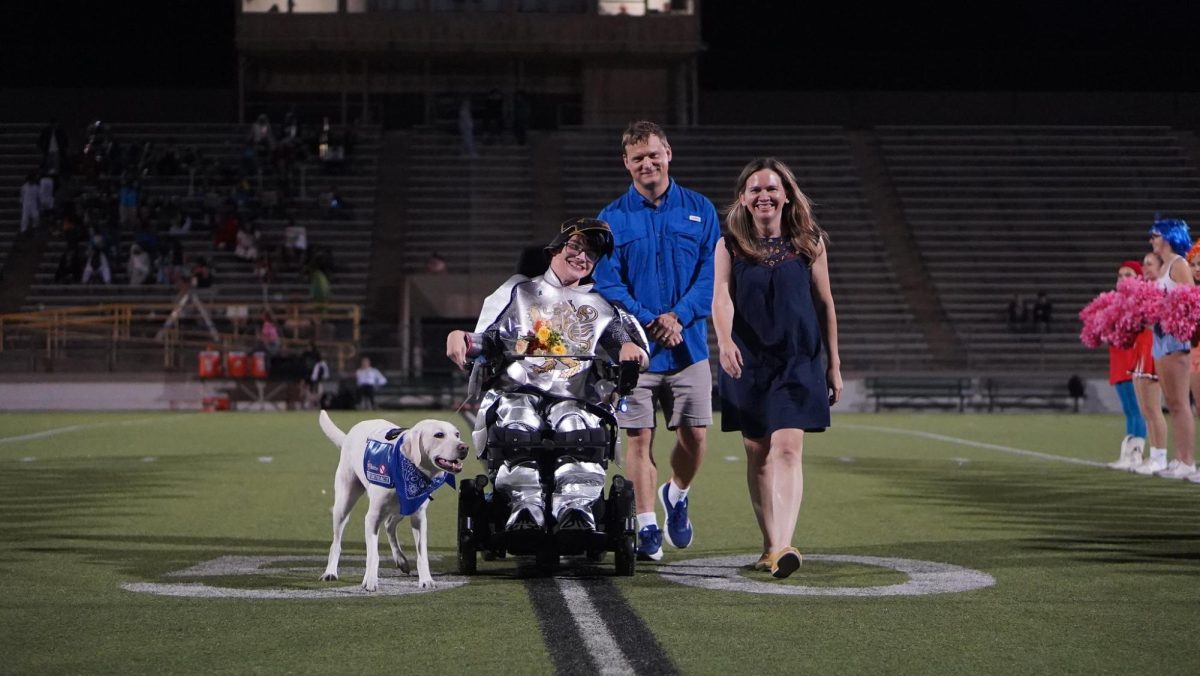
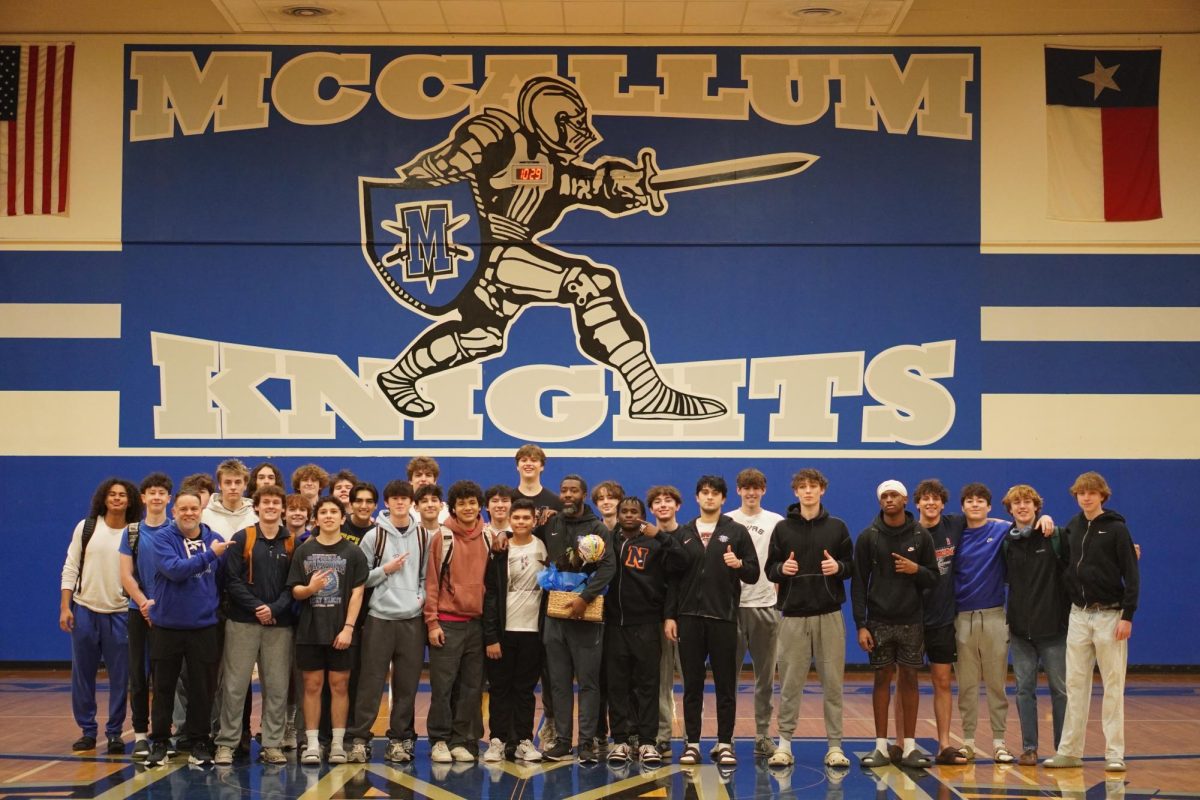

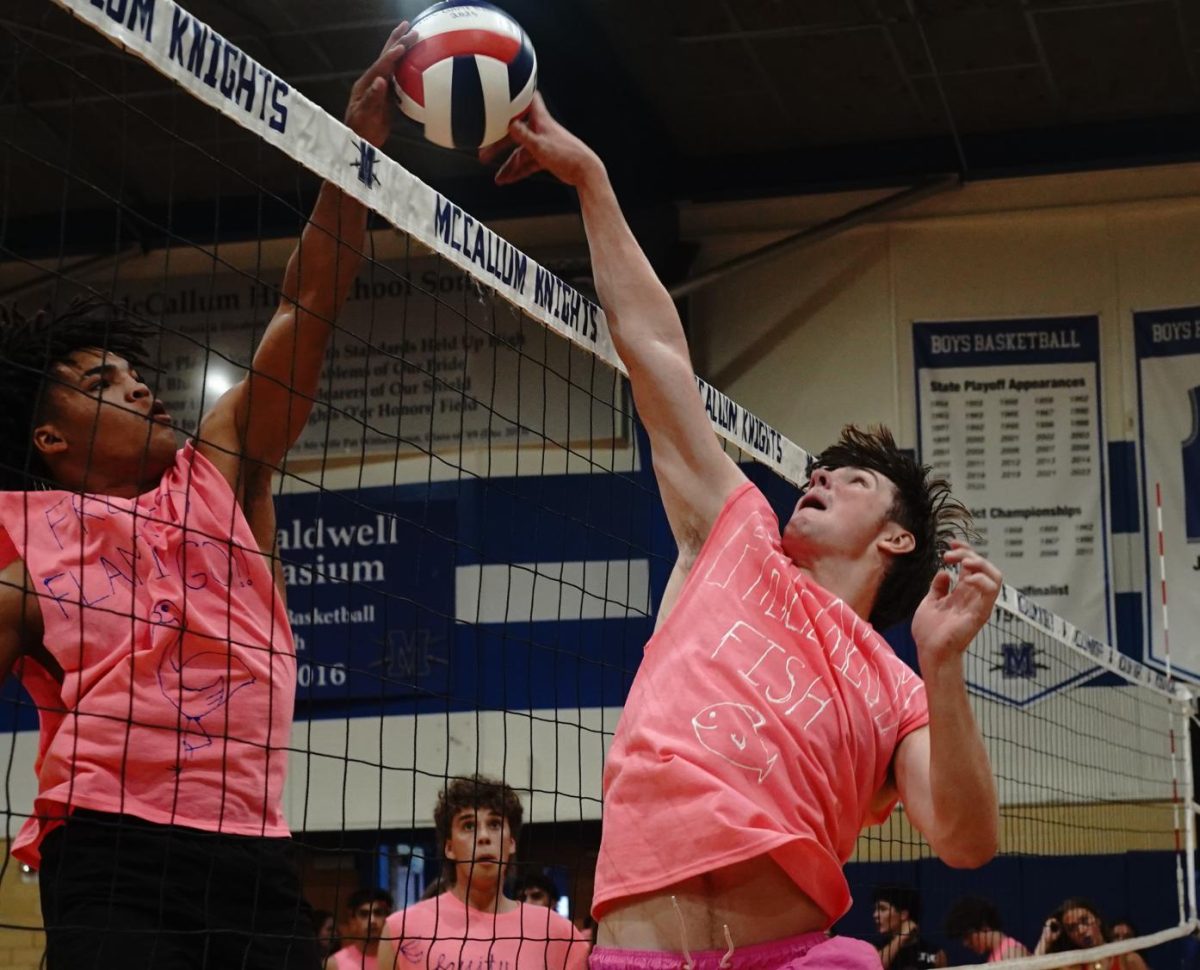
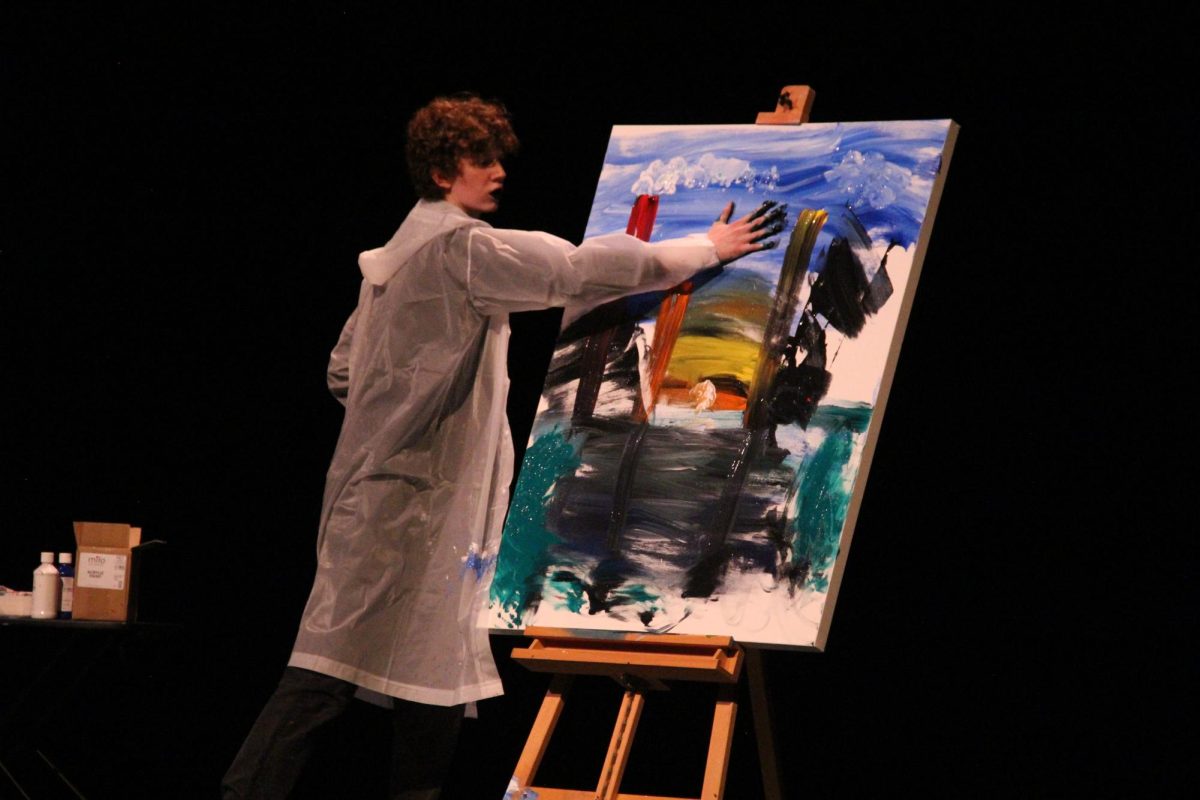
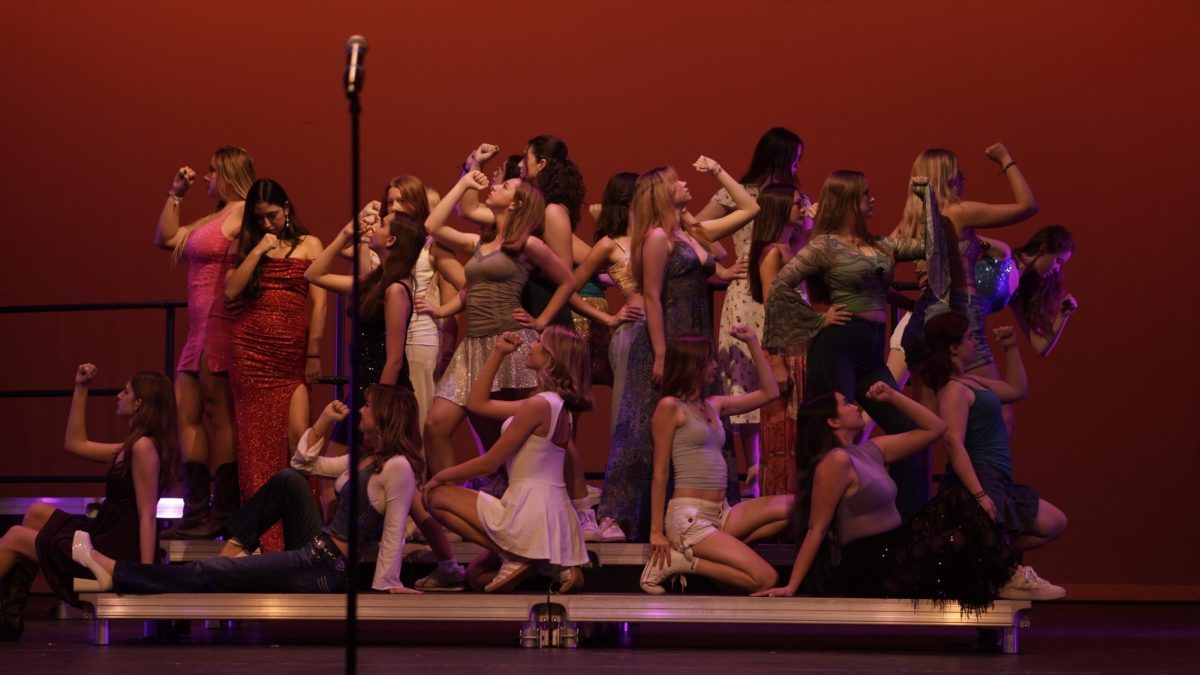
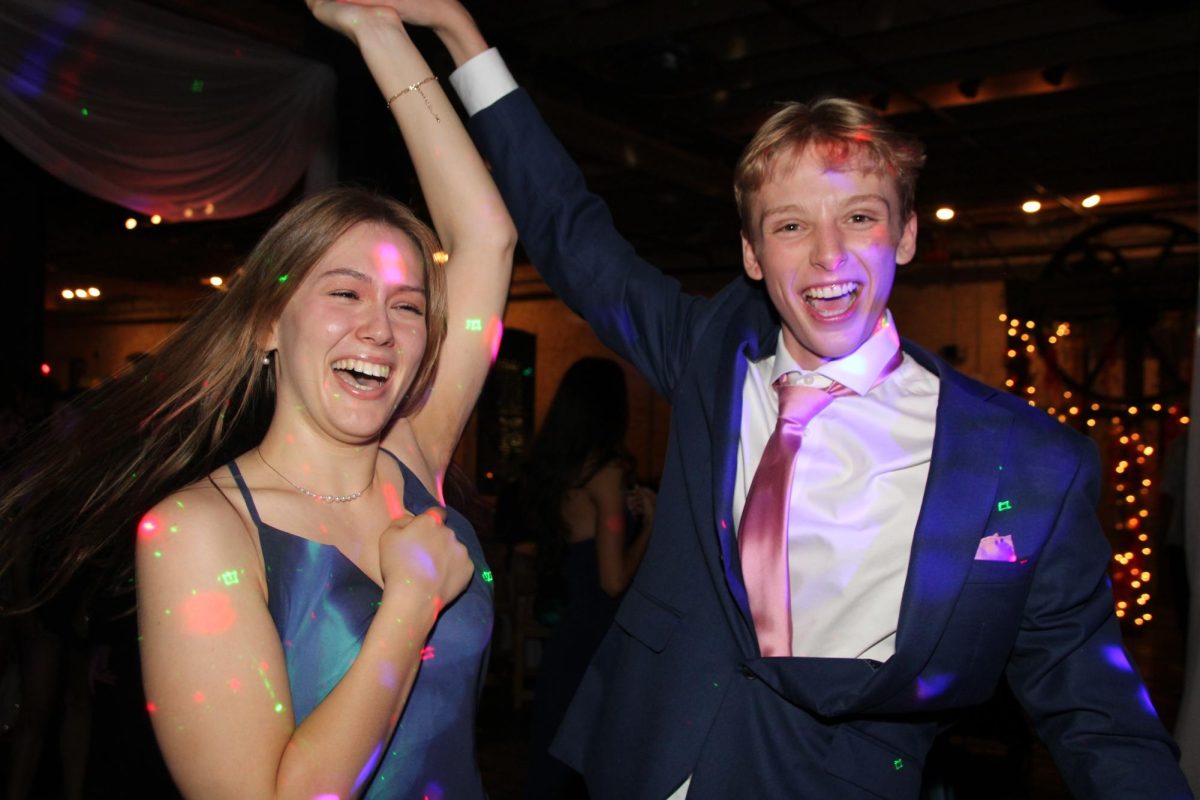
![WORKING TOGETHER: McCallum Dance Company performs the student-choreographed “Dancing with Death” during last Tuesday’s dress rehearsal before the spring dance show. Sophomore Pia Sosa performed in five different numbers during the show and thought that everything went well even despite a few challenges.
“I was getting a little worried closer to the end because there were still a lot of changes happening and people getting shuffled around into places,” Sosa said. “But by the tech week and by the shows, it really felt like we all worked together and came together.”
Sosa’s favorite part was performing “Come Play,” which was choreographed by junior Maya Tien. Sosa loved being able to work with Tien because of her level of preparation and being able to perform hip hop, since the dance company does not perform that style as much.
“It’s the first number I do in the show, and I always just felt like it gave me so much energy,” Sosa said. “It felt really good because we rarely do hip hop, so it just felt like such a great opportunity to do something that I don’t get to do all the time.”
Sosa explained that there were some challenges due to sudden changes in several pieces, however Sosa said she was proud of how the company responded as a whole.
“Everybody put their best foot forward and pushed through any challenges that they were having,” Sosa said. “I’m really proud of how the company handled it all.”
Overall, Sosa said she is grateful for all the work put in by the dance directors and the student choreographers for producing the show.
“We couldn’t have put the show together without [them],” Sosa said. “Mac dance is amazing and I can’t wait to choreograph next year.”
Caption by Riley Pita. Photo by Harper Maxwell.](https://macshieldonline.com/wp-content/uploads/2025/04/54471134934_215f07dcfb_o_54485123147_o-1-1200x800.jpg)
